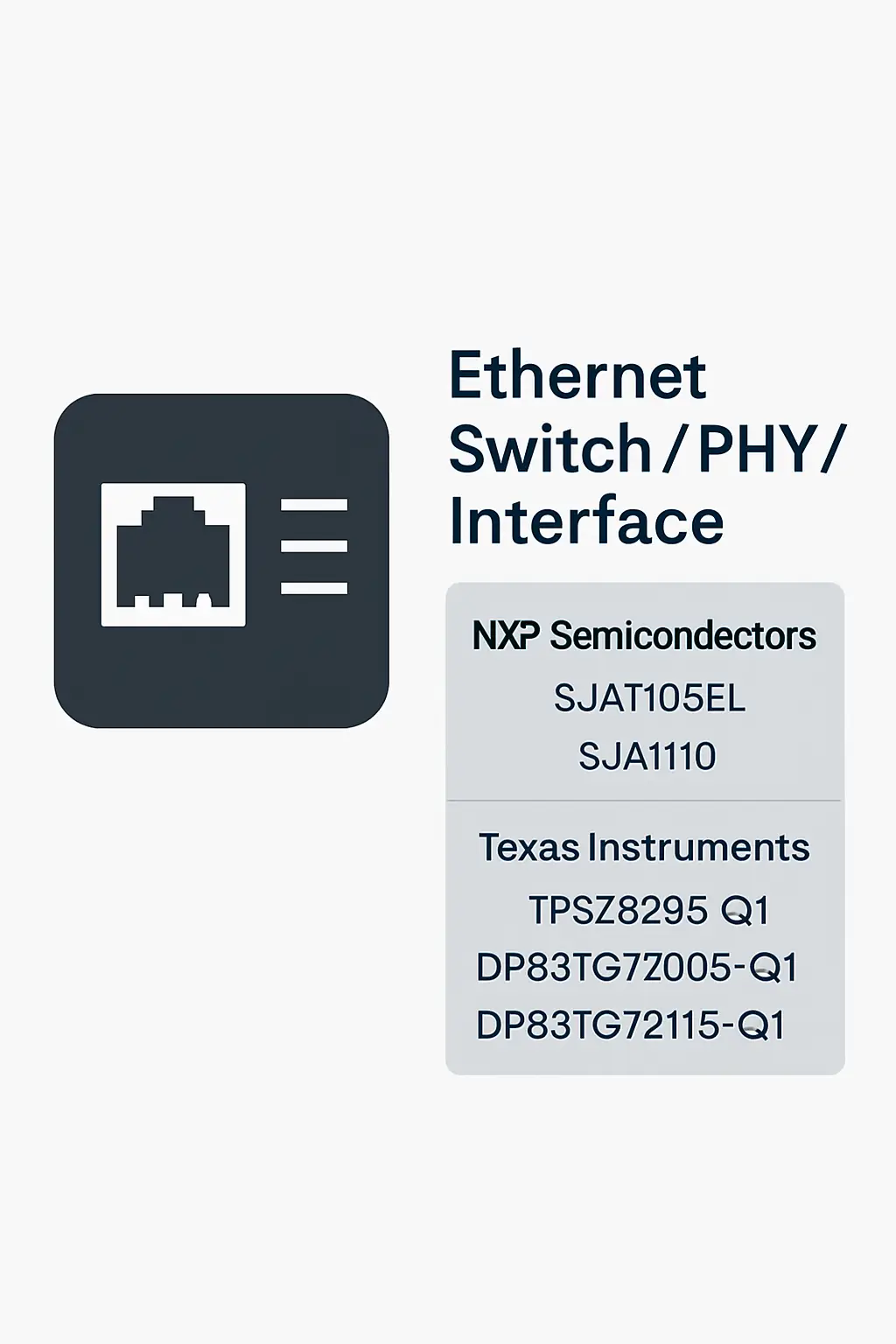Ethernet Switch / PHY / Interface
Automotive Electronics is a critical component in modern vehicles, enabling advanced features and improving driving experiences. Among its key areas is Connectivity & Telematics, which facilitates vehicle-to-vehicle (V2V) and vehicle-to-infrastructure (V2I) communication, enhancing safety and efficiency. Zonal & Domain Controllers are central to managing various vehicle functions, offering improved performance, scalability, and software integration. These controllers streamline the architecture by grouping related functions into zones or domains, reducing wiring complexity and increasing system reliability.
Ethernet Switch, PHY, and Interface play a vital role in supporting high-speed data transmission within the vehicle. They enable seamless communication between different electronic control units (ECUs), allowing for real-time data exchange and efficient processing. This technology is essential for supporting advanced driver-assistance systems (ADAS), infotainment, and autonomous driving capabilities.
The combination of these technologies supports the development of next-generation vehicles with enhanced connectivity, performance, and user experience. Applications include smart mobility solutions, over-the-air (OTA) updates, and integrated vehicle ecosystems. By leveraging Ethernet-based communication, automotive systems can achieve higher bandwidth, lower latency, and greater flexibility, meeting the growing demands of modern transportation. This innovation ensures that vehicles remain connected, safe, and intelligent, paving the way for the future of mobility.
Details
Ethernet Switch / PHY / Interface

Related Parts
| Series Name | Description | Manufacturer Name | Attribute Description |
|---|---|---|---|
| NXP Semiconductors | 5-port Gigabit TSN Ethernet switch, -40°C to +105°C operating temperature, supports IEEE 1588, AVB, and TSN, integrated MAC and PHY, up to 800 Mbps forwarding rate, flexible port configuration, low latency, and advanced security features. | ||
| NXP Semiconductors | 5-port Gigabit Ethernet switch with Time-Sensitive Networking, AVB/TSN support, -40°C to +105°C operating temperature, MII/RMII/RGMII interfaces, integrated PHYs, low latency, and automotive grade. | ||
| NXP Semiconductors | 5-port Gigabit Ethernet switch with TSN support, 80 ns latency, -40°C to 105°C operating temperature, MII/RMII/RGMII interfaces, integrated PHYs, low-power design, AEC-Q100 qualified. | ||
| NXP Semiconductors | Quad-core ARM Cortex-A53, 1.2 GHz, 2 MB L2 cache, 800 MHz DDR4/LPDDR4, 16 nm FD-SOI, integrated security engine, TSN Ethernet, -40°C to 125°C junction temp. | ||
| NXP Semiconductors | 5V CAN transceiver, 16-pin SO, -40°C to +125°C, high-speed up to 1 Mbps, low-power standby mode, integrated VIO level shift, fault-protected, ISO 11898-2 compliant. | ||
| Texas Instruments | 5.5V, 4A peak gate driver, 1.8V logic input compatible, 6ns propagation delay, 1.5A sink/source current, 2.7V to 5.5V supply, 350kHz to 2.3MHz switching frequency, 6-pin SOT-23 package. | ||
| Texas Instruments | 10/100/1000 Mbps Ethernet PHY transceiver, automotive grade, supports MII/RMII/GMII/RGMII, integrated signal transformers, -40°C to 125°C operating temperature, low EMI, AEC-Q100 qualified. | ||
| Texas Instruments | Automotive-grade Ethernet PHY, 100BASE-T1, 1000BASE-T1 support, -40°C to 125°C operating temperature, integrated RGMII, low EMI, compliant with IEEE 802.3bw and 802.3bp standards, embedded diagnostics, <150mW power consumption. | ||
| Texas Instruments | 10BASE-T1L PHY, 1.8V/3.3V operation, -40°C to 125°C temperature range, supports long-reach single-pair Ethernet up to 1km, integrated DC-DC converter, low EMI, automotive-grade. | ||
| Texas Instruments | 10/100/1000 Mbps automotive Ethernet PHY; supports MII, RMII, RGMII; -40°C to 125°C; low EMI; integrated termination;符合AEC-Q100标准 |








.png?x-oss-process=image/format,webp/resize,h_32)










